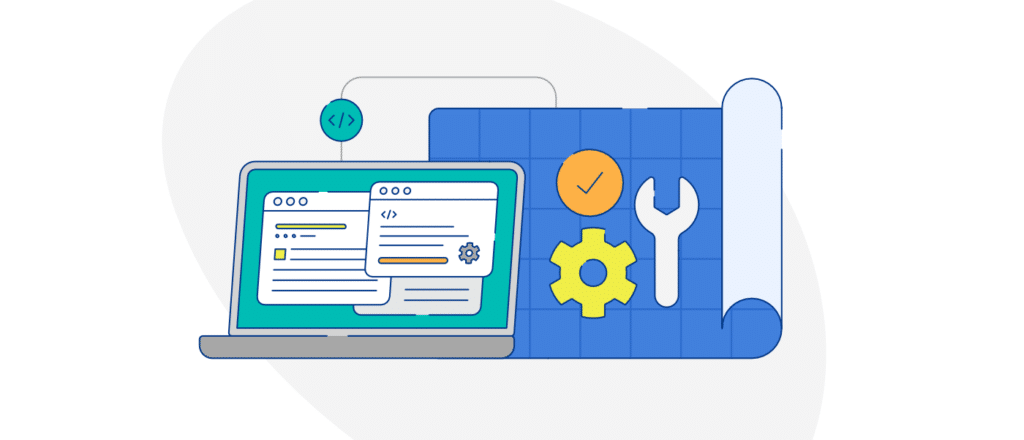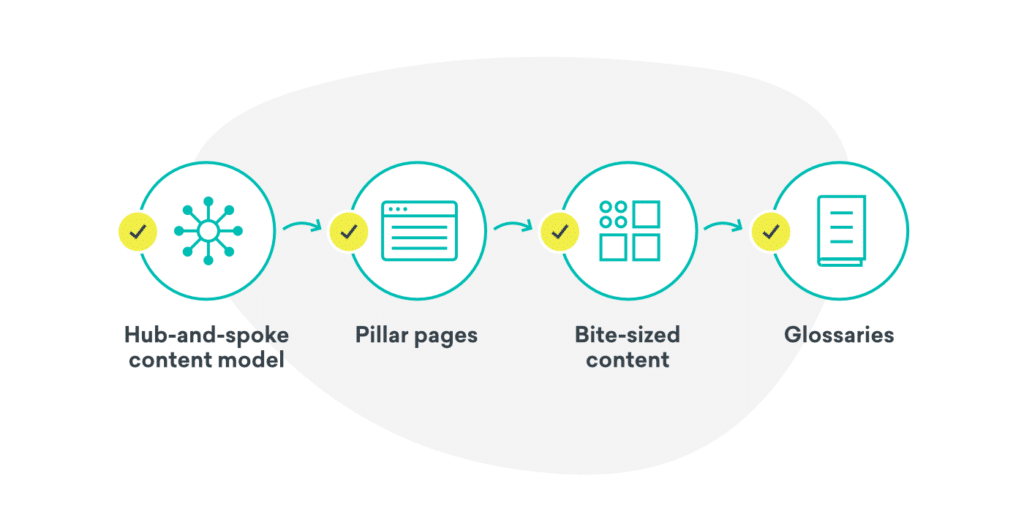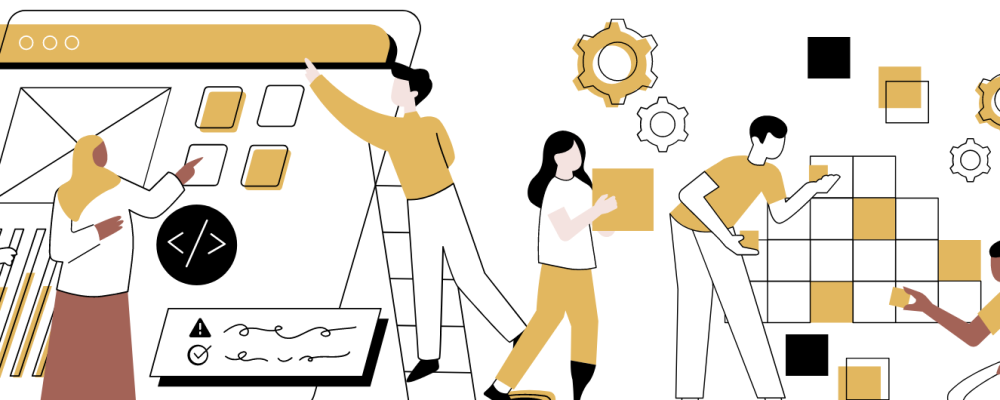
Building a developer-centric content strategy requires a delicate balance between addressing developers’ intellectual curiosity and practical needs. Developers possess an inherent knack for problem-solving, driving them to actively seek knowledge to overcome specific challenges. They gravitate towards precise, comprehensive content that offers immediate relevance to their tasks. Clarity trumps cleverness, and substance takes precedence over style. What resonates with them is content that respects their intelligence and time and delivers significant value in exchange for their readership.
Creating developer-focused content isn’t just about speaking their language — it’s about understanding their world, challenges, aspirations, and ways of thinking. It’s about stepping into their shoes and viewing your content through their eyes. This understanding is the cornerstone of creating content that resonates with developers — genuinely valuable and trustworthy content. It’s this trust that can transform your content from a mere information source into a reliable guide and companion in their professional journey.
It all begins with a strategy.
Strategizing Developer-Focused Content: From Ideation to Realization
Developing content for a developer audience extends beyond jargon and expert-level technical writing. It’s a thoughtful process where understanding the audience’s challenges and needs is paramount.
Before diving into the intricacies of code snippets and technical specifications, it’s crucial to determine what needs addressing and why. Successful content creation isn’t a wild guess: It’s a deliberate, well-informed process that starts with critical questions, insightful understanding, and a pulse on the ever-changing needs of the developer audience.
There’s no single “right” way to speak to developers. Developer communities are diverse, and their needs are as varied as their areas of expertise. What works for one group may not resonate with another. Therefore, the importance of understanding your specific audience can’t be overstated.
Developing an effective content strategy is less about crafting a universal solution and more about recognizing and appreciating the unique complexities and variations within developer audiences. Remembering this is the key to delivering content that truly resonates. It also underscores the necessity of avoiding a one-size-fits-all approach.
Navigating the Marketing Funnel: Tailored Content for Every Stage
The marketing funnel serves as a strategic guide, illustrating the path that potential customers traverse on their way to a purchase. When looking to reach developers, each stage of this funnel requires a unique content approach.
- Awareness Stage — Your content should capture developers’ attention, addressing broad industry trends and situating your brand as a trusted source of insights.
- Consideration Stage — Your content becomes pivotal in providing deeper insights. This is the phase where developers evaluate potential solutions to their challenges. Your content should offer meticulous analyses, comparative assessments, and technical explanations that empower them to make informed decisions.
- Decision Stage — Your content assumes the responsibility of sealing the deal. It must provide the final push developers need to choose your product or service over competitors. This might encompass compelling case studies, persuasive testimonials, or comprehensive documentation showcasing how your solution effectively addresses their pain points.
Aligning Solutions with Problems
Most content targeted at developers aims to provide solutions to development hiccups. But in a world awash with answers, what are the real problems? What’s the driving force for developers to tab out of their integrated development environment (IDE) and search for a solution?
Understanding the specific pain points and challenges faced by developers is critical. Before diving into solutions, we need to intuitively understand the problems developers face daily. By attuning to the developers’ perspective and aligning with the shifting sands of the tech world, we can tailor our offerings to their genuine needs and ensure our content isn’t just relevant but invaluable to them as professionals.

We should consider:
- Audience — How well do you understand your specific audience and their needs? Create detailed audience personas, including their job description, experience level, preferred coding languages, most used tools, industry challenges, and details that can help zero in on specific audience segments.
- Practicality — What specific challenges are developers grappling with that your product or service can potentially solve?
- Longevity — As the tech landscape evolves, are there new hurdles you can address that developers are encountering?
- Alignment and relevance — Consider how your content aligns with your audience’s journey. Content mapping can ensure your material remains relevant and valuable throughout that journey. From initial awareness to the final decision-making, what kind of content might a developer need at each stage?
Adapting to the Tech Terrain
Developers thrive in a vibrant, ever-evolving community — both on and offline. They engage in peer discussions, share their work, and continuously learn from each other. They’re acutely aware of the latest industry trends, technological advancements, and best practices. Therefore, creating content for developers requires you to be just as immersed in this dynamic community: You need to be in tune with its pulse and responsive to its changing needs.
Positioning yourself at the forefront of the technological curve establishes you as an authority. To achieve and, more importantly, maintain this expertise, answer the following questions:
- Are you sharing knowledge? Are there novel technologies, tools, or methodologies that developers are curious about, and does your organization have unique insights into or solutions for them?
- Are you maintaining relevance? With the tech industry’s dynamism, how can you ensure your content remains relevant and timely? A consistent publishing schedule can keep your content fresh and on the beat. But older content can quickly stagnate. Regular content audits can help align your content with the evolving technological landscape.
The Developer’s Content Menu
Content creation for a developer audience requires a keen understanding of their preferences and learning styles. Different content types cater to varied informational needs and engagement levels.
Let’s review some of the different types of written content you could consider for your developer-focused content strategy:
- Articles — Narrative-driven articles or blog posts are integral to developer-focused content. These pieces can offer comprehensive overviews of technical concepts, compare different tools or products, or provide thought leadership insights on industry trends. The beauty of articles lies in their versatility: They can be adapted to suit a wide array of topics, making them a powerful tool to engage, educate, and inspire developer audiences.
- Tutorials — Written hands-on guides provide an engaging, interactive form of content. These step-by-step instructional pieces guide developers through specific tasks or procedures, offering a practical, real-world application of concepts and skills. Tutorials can cater to varying skill levels — from basic introductions for beginners to in-depth guides for advanced users — making them a vital resource in a developer’s learning journey.
- Case studies — Bridge the gap between theoretical knowledge and real-world application. Case studies offer developers a tangible representation of your solutions at work by showcasing how your product or service has successfully addressed specific challenges. They validate your claims and provide a practical blueprint that developers can relate to their needs.
- Whitepapers — Stand as a testament to your brand’s expertise and thought leadership. These are long-form, in-depth analyses on specific topics, supported by data and research — and are often appreciated by developers when they seek deep dives into complex or emerging technologies. They can effectively demonstrate your brand’s proficiency and foresight in the tech industry.
Topic Research: A Blend of Data and Intuition
A successful content strategy combines data-driven insights with human intuition, ensuring your message always hits the mark. Stand out in the crowded digital space by leveraging analytics tools, competitor insights, audience feedback, and internal expertise:
- Leverage analytics — Tools like Google Trends, Ahrefs, or BuzzSumo provide insights into trending topics, helping you craft content that truly resonates.
- Track competitor content — Identify gaps in your content strategy by understanding competitor discussions and finding ways to differentiate your content.
- Crowdsource ideas — Gather direct audience feedback through platforms like Twitter polls or LinkedIn to identify potential topics.
- Internal collaborations — Engage in brainstorming with in-house developers or product teams to uncover industry issues and customer queries.
End-to-End Strategy
Crafting developer-focused content requires more than just topic planning. It calls for a comprehensive end-to-end strategy, a cohesive vision of how topics interrelate, and a presentation that makes sense to the reader and optimizes the discoverability of the content. This involves leveraging various content types, engagement methods, and distribution channels to ensure the content reaches the right audience in the most effective way.

- Hub-and-spoke content model — Core topics serve as the hub, with specific content pieces branching out as spokes, forming a connected ecosystem reinforcing each other.
- Pillar pages — Comprehensive content anchors on key topics enhance SEO and establish brand authority.
- Bite-sized content — Short blog posts or videos complement pillar pages, offering easily digestible insights and guiding audiences to deeper information.
- Glossaries — Consider developing glossaries for technical terms and concepts related to your content. These serve as quick reference points, improving the accessibility and navigability of your content.
Maximizing Reach: A Strategic Approach to Publishing
A strategic approach to publishing goes beyond the creation of high-quality content. It ensures your message meets your audience precisely where and when your readers are most receptive. Achieving this necessitates finding the right balance between consistent content output and adaptive flexibility, all while deeply understanding your audience’s habits and preferences. Here are some factors to keep in mind:- Publishing cadence — Regular content releases build anticipation, establish your brand as a reliable information source, and foster a loyal following.
- Calendar alignment — Aligning content with special events or calendar dates can boost your content’s relevancy. These could be major industry events, product launch anniversaries, or dates relevant to developers, like Programmers’ Day. Time-sensitive content like this can drive engagement and showcase your brand’s relevance to the industry.
- Distribution channels — Diversify distribution platforms, including industry-specific sites, social media, and forums, extending your content’s reach. While your primary platform may be your own website or blog, remember that developers frequent various platforms, running from industry-specific sites like Hacker News to broader platforms like LinkedIn and Reddit.
Beyond Content: Engagement Strategies for Developers
But crafting engaging, developer-focused content is only one aspect of the equation. Strengthening your connection with developers through engagement strategies encourages audience participation and builds your credibility as an informed, developer-centered authority. Here are a few possibilities to explore:- Community participation — Active involvement in developer forums or communities like GitHub, Stack Overflow, and CodeProject lets you to have boots-on-the-ground conversations with developers and underscores your commitment to the community.
- Interactive events — Think beyond written content. Organize webinars, Q&A sessions, hackathons, or informal chats, offering real-time interaction and nuanced insights into the developer psyche.
- Polls and surveys — Polls and surveys can offer broad, quantifiable data about developers’ challenges, preferences, and areas of interest. Be thoughtful in your question design to gather information that will help you produce more focused and relevant content.





